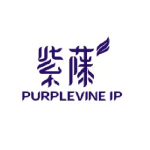On October 1 2021, the Administrative Measures for Registration and Record-Filing of Medical Devices came into force. The Administrative Measures for Registration of Medical Devices, effective from October 1 2014, was terminated at the same time.
Under Chapter 4 of the new measures, Section 1, Special Registration Procedures, is closely related to IP rights. This section provides the registration procedures for innovative products under Articles 68 to 72. Below are the details of these articles.
Article 68
Article 68 of the measures regulates the scope of the innovative products that are eligible for registrations. Specifically, there are three requirements:
1. Core technology of the invention
The measures put forward requirements of novelty for the core technology of the products. The article stipulates that:
The applicant should have obtained the patent ownership in China;
The applicant should have obtained the right of use for the core technology of the invention in China, and the application for the core technology invention patent should have been made public; or
A retrieval report should be issued by the Patent Retrieval Consulting Centre of the China National Intellectual Property Administration (CNIPA) to indicate that the core technology applied to the product is novel.
2. Finalisation of product
The measures specify the completeness of an innovative product and the authenticity of its research and development. The essence of the product should be finalised, the research process should be authentic and controlled, and the research data should be complete and traceable.
3. Pioneering in China and leading the globe
The measures define the advancement and clinical application value of an innovative product. These measures require that the working principle or mechanism of the product should be the first of its kind in China, and that the performance or safety of the product shows a fundamental improvement compared with similar products.
The technology applied to the product should also advance the existing technology globally, and the product should have significant clinical value.
Article 69
Article 69 of the measures regulates the time for applying the registration procedure for innovative products, instructing that the applicant should apply for the examination of innovative medical devices to the National Medical Products Administration (NMPA) after the product is substantially finalised.
Articles 70-72
Article 70 states that the NMPA and its relevant departments should assign a specific person to provide timely communication and guidance to the applicants for the registration.
Articles 71 and 72 respectively provide for the circumstances in which the procedure for the registration of innovative products can be terminated, and the circumstances in which the registration of innovative products is no longer applicable.
Advice for overseas applicants
The above innovative product registration procedures do not limit the eligibility of applicants. Both domestic and overseas applicants are eligible to submit corresponding technical data and supporting documents to register their products.
Overseas medical device enterprises should utilise this innovative product registration procedure to accelerate the registration process for their medical devices. According to the recently introduced measures, these procedures put a strong focus on the novelty of the products. The IP authorities determine the novelty of a product mainly on the grounds of whether the core technology has obtained an invention patent.
Therefore, if overseas enterprises consider utilising these procedures, they should be mindful of the patent mapping relating to the core technologies of their pioneering products in China, and seek to apply for a Chinese patent as soon as possible.
If any medical enterprise applies for patents in China by taking advantage of the Paris Convention for the Protection of Industrial Property or the Patent Cooperation Treaty (PCT), they should try to expedite the process for the application to enter into China. If necessary, they may regard China as a priority country or CNIPA as the receiving agency for PCT applications.
During the application, overseas enterprises should entrust the Patent Retrieval Consulting Centre of CNIPA to issue a retrieval report to prove the novelty of their technologies, thus shortening the registration time. In addition, the process data and test data of the research and development should be properly kept for reviews during the registration process.
The innovative products registration procedures are recent introductions, replacing the Administrative Measures for Registration of Medical Devices. The implementation of this special approval procedure, and the appointment of a specific person at the NMPA to provide timely communication and guidance, fully shows the importance of these procedures.
Companies that possess advanced technology products should take advantage of these procedures to accelerate the registration of their innovative products to seize market opportunities. The administrative measures also encourage research and innovation around medical devices in China, and foster the rapid and high-quality development of the medical device industry.












